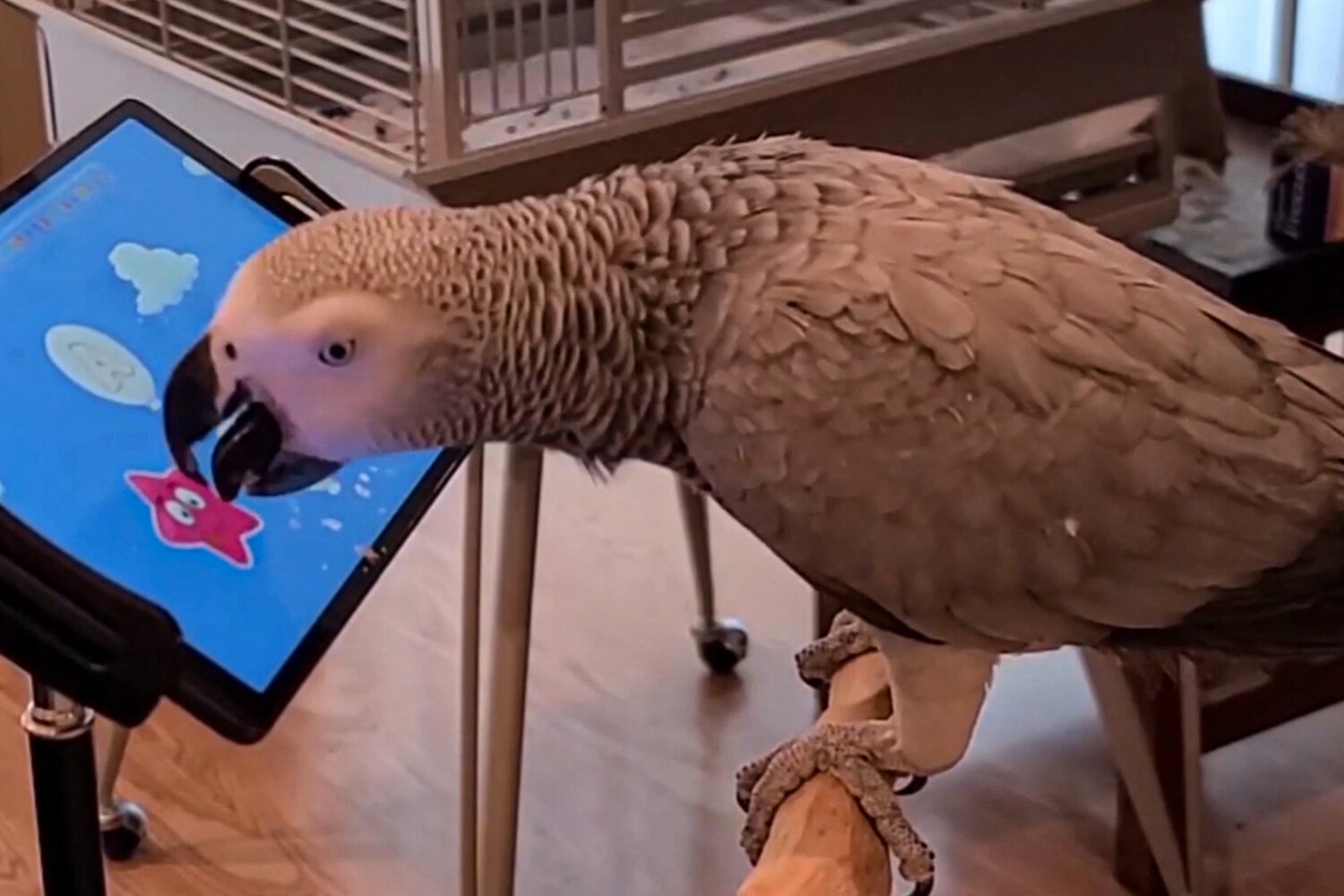How do you design an app for a parrot? Consider games that are “made to be licked,” a new study suggests.
Parrots have much in common with toddlers. The brainy birds can learn to recognize colors and shapes, manipulate objects, build large vocabularies and make their needs known at improbably high volumes. They are also playful, intelligent and curious; without ample cognitive enrichment, they quickly become bored.
So owners of pet parrots sometimes turn to a strategy familiar to parents: reaching for the closest available screen. And some owners have found that they can keep their birds occupied with mobile games, drawing apps and music-making programs designed for young children. “Kids apps are quite popular,” said Rébecca Kleinberger, a scientist at Northeastern University who studies how animals interact with technology.
But apps designed for humans may not be ideal for parrots, which tend to use their tongues to interact with touch screens. That results in a variety of unique touch behaviors, Dr. Kleinberger and her colleagues reported in a new study. (The research, a collaboration between scientists at Northeastern and the University of Glasgow, has not yet been published in a peer-reviewed journal but will be presented at a conference in May.)
The results suggest mobile apps have potential as an enrichment tool for parrots, but they should be tailored to the birds’ specific biology.
“How do we make technology work for their unique bodies and their unique needs?” Dr. Kleinberger said.
To conduct the study, the scientists created a customized version of a mobile app designed to help researchers and designers collect information about how humans interact with touch screens. The app displayed a series of red circles; the birds’ task was to tap them as quickly and accurately as possible, while the app collected data on how the parrots touched the screen.
